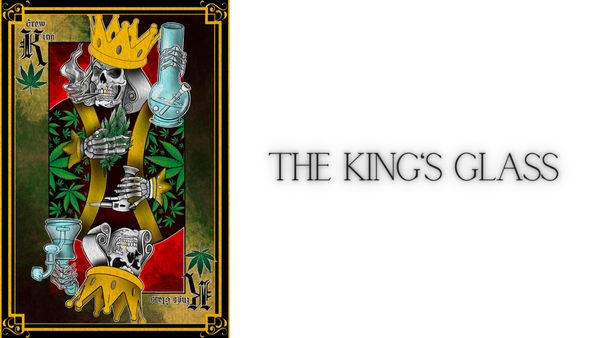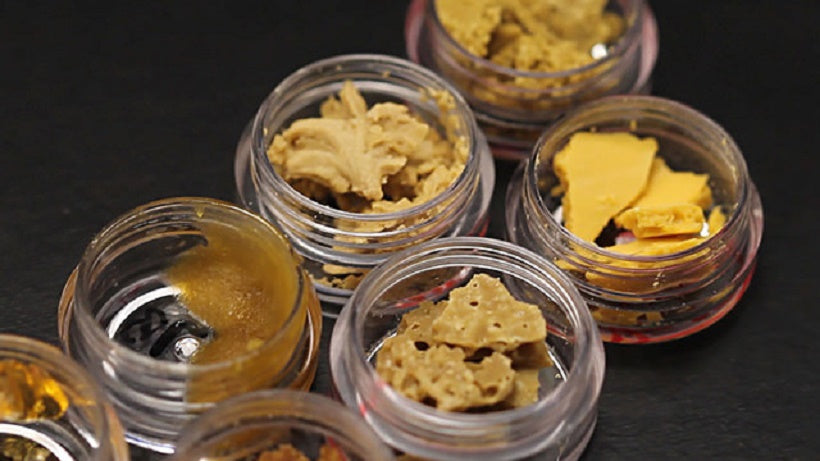Concentrates Explained
Solvent Based Defined
Solvent-based and solventless marijuana concentrates are products that have been created from the cannabis plant and are much more potent than just flower alone. Well, some concentrates call for a solvent, such as CO2, butane or alcohol, in order to extract the THC and other valuable cannabinoids and terpenes. If a concentrate utilizes a solvent to be created it is referred to as an extract. Other concentrates require no solvent and these are referred to solventless concentrates. All extracts are concentrates but not all concentrates are extracts. While different types of cannabis concentrates might seem to run together, they are each quite distinctive. There are numerous types of concentrates and extracts and new ones being developed all the time. Kief, hash, rosin, tinctures, oils, shatter, pull and snap, wax, budder or badder, crumble, honeycomb, distillate and crystalline are the concentrates we will focus on.
Popular Solventless Concentrates
Kief:
Kief is the most basic of the THC concentrates. It is a powder-like substance that lives on cannabis flowers. If you own a grinder with a small reservoir at the bottom, known as a kief catcher, you are probably familiar with kief.
Hash:
Hash is, basically, pressed kief or compressed resin. There is finger hash, bubble hash, dry sift. To make hash, THC rich trichomes are separated from the cannabis plant and condensed with high temperature and pressure. It is highly potent.
Rosin:
Rosin is a sticky substance created when heat and compression meet a bud of cannabis flower. Unlike hash which is made with just trichomes, rosin is made with the entire cannabis bud. Rosin can be made commercially but is also able to be safely and easily produced at home with a hair straightener or t-shirt press.
Solvent Based Concentrates
Tincture:
Tinctures utilize decarboxylated cannabis, placed in a jar with a high proof alcohol like Everclear. The mixture is then stored for several weeks, strained and consumed. It remains a liquid, but will be green in color and is spiked with all the good stuff that has been leached out of the plant into the alcohol.
Oils:
The most popular oils are THC honey oil, CO2 extracted oil, BHO extracted oil, distillate and Rick Simpson Oil. When made properly, it is a thicker liquid than a tincture, but viscous enough to not be a solid either. It is more popularly utilized in a pre-filled vape pen and can also be placed inside capsules for oral ingestion.
Shatter:
Shatter is a solid substance, which resembles a honey-colored glass shard. When tapped with a dab tool, it breaks into pieces or “shatters,” get it? Shatter is one of the most recognized concentrates, is easy to manipulate and is far less messy than other varieties of concentrates or extracts.
Pull & Snap:
Pull and snap looks very similar to shatter but has an almost taffy-like consistency. Instead of shattering into pieces, pull and snap can be…pulled and snapped. As a piece of this concentrate is pulled, it reaches a breaking point then snaps off the whole. It, too, is honey colored.
Wax/Budder:
As the name suggests, wax concentrates resemble the texture of candle wax. Depending on the overall consistency it can be known as budder, badder, crumble or honeycomb.
Crumble/HoneyComb:
Crumble and Honeycomb wax have the same consistency but can be in different forms. Crumble is typically used to describe wax that is already broken up, or crumbled. Honeycomb is used to describe wax that is still mostly intact but is filled with holes like, you guessed it, a honeycomb.
Distillate:
Distillate is a refined, or distilled, version of a cannabis extract. After extraction, the distillate is run through a purification process several times. The result is a liquid, clarified distillate, much like honey in color and consistency.
Crystalline:
Crystalline is a solid extract that has been through many processes and filters in order to destroy the plant matter remaining in the extract, preserve the THC and remove any leftover solvents. The remnants are clear crystals that boast 99% THC.

